Log in or create new account to save this product to your wishlist.
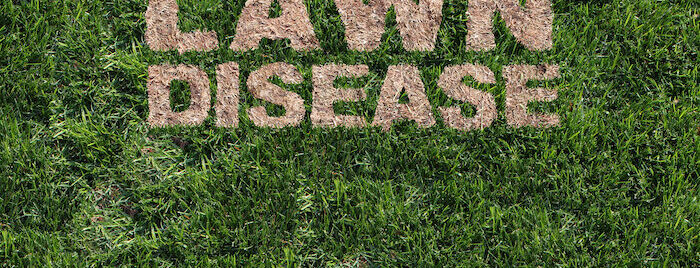
How to Identify, Fight & Prevent Lawn Diseases
Lawn diseases can be difficult to spot, but they're usually caused by a fungal infection. Find out how to identify and prevent lawn diseases.
🌱 All important maintenance moments for your lawn during the year. Leave your email and we will send you the lawn calendar for free.
Enter your email
Receive the lawn calendar in the mail
Enjoy a green lawn all year round!

- Order by 2PM = shipped today
- 250.000+ satisfied customers!
- 60 day satisfaction guarantee
Are you doing everything you can to beautify your lawn but not quite seeing optimal results? Perhaps you’re scarifying, fertilising, aerating, and watering, but your lawn still looks lacklustre and patchy. Could there be an undiagnosed lawn disease preventing your turf from looking its best?
- What are lawn diseases?
- Lawn disease: an overview
- Snow mould “Microdochium nivale” / Fusarium & Snow Mould lawn disease
- Red thread / pink patch lawn disease
- Fairy rings lawn disease
- Powdery/downy mildew
- Dollar spot disease
- Rust lawn disease
- Pythium lawn disease
- Could the disease actually be a pest infestation?
- Your lawn patches could be a nutrient deficiency
- Preventing lawn diseases
- FAQ’s
What are lawn diseases?
Fungi are the most common pathogens in the grass, although not all fungi are considered diseases. Fungi play a clear and beneficial role in breaking down organic material and are therefore always present in the grass.
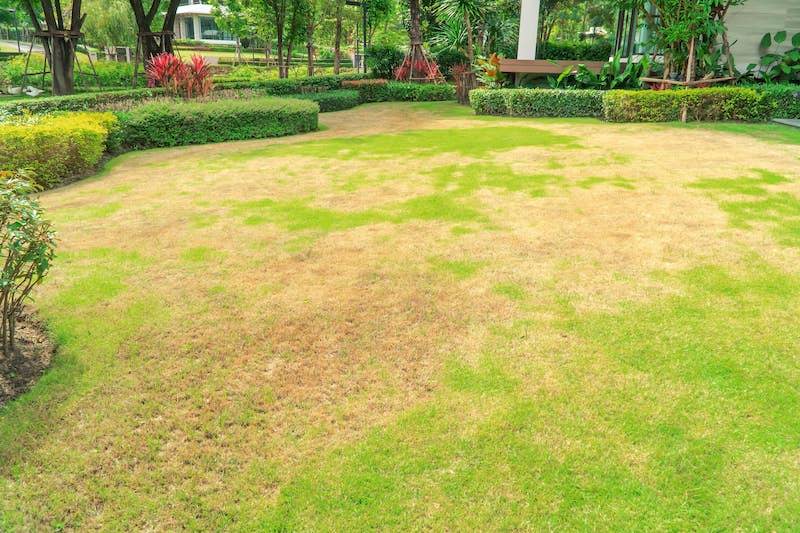
The shift from a beneficial organism to a disease occurs under favourable conditions, such as a lack of soil life or a weakened lawn. Weather conditions also play a role, as unpredictable weather patterns make the effective control of fungi challenging.
Lawn disease: an overview
There is a range of lawn diseases in the UK, but the most commonly found are:
- Snow Mould
- Red Thread
- Fairy Rings
- Powdery mildew
- Dollar spot
- Rust disease
- Pythiu
We’re going to explore these lawn diseases, explaining how to identify them so you can equip yourself with the best possible defense.
Snow mould “Microdochium nivale” / Fusarium & Snow Mould lawn disease
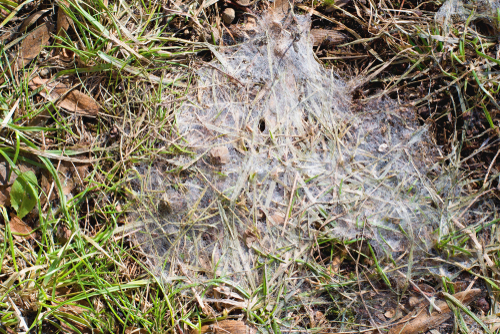
Symptoms: White fluffy patches throughout the lawn, resembling a thin layer of snow (hence the name!). You’ll first notice patches of just a few centimetres in diameter, but eventually, they spread to around 30cm in size. The lawn above ground appears to die off.
Causes: Too much nitrogen often causes snow mould, which is usually a sign of over-fertilisation from the previous autumn. Alternatively, snow mould occurs in poorly drained soil due to waterlogged turf.
Occurrence: In cool, damp weather – especially in the winter.
Lawn Disease Treatment: Prevention is the best treatment here, so loosen the soil surface by scarifying and aerating.
Red thread / pink patch lawn disease
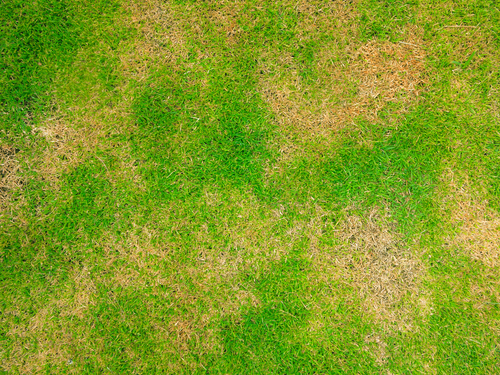
Symptoms: Reddish/pinkish spots of various shapes, resulting in root death. If you look closely, you can spot the fungi within the blades of grass.
Causes: A lack of nitrogen, muggy/humid weather.
Occurrence: Appears frequently in ornamental lawns but can also occur in heavy-use sports lawns. Usually triggered in temperatures from 5-30ºC.
Lawn Disease Treatment: Apply a nitrogen-rich fertiliser and ensure the soil doesn’t dry out. Turn your sprinkler on in the morning so that the grass blades can dry out during the afternoon. You’ll be able to rake out the dead fungal remnants within a few days.
Fairy rings lawn disease
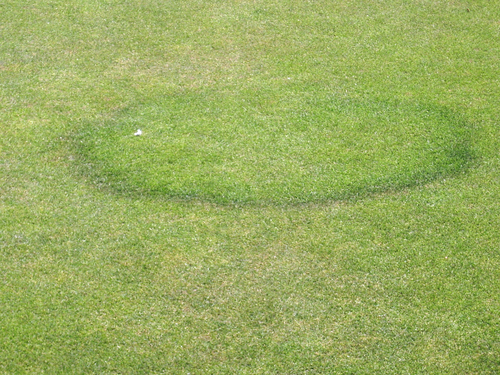
Symptoms: Brown or dark green circles from 4.5m-9m in diameter. The fungus creates a waterproof (or hydrophobic) layer on the soil surface, resulting in starved roots, producing brown, dead grass rings. Alternatively, the nitrogen released when the fungi consume and decompose organic matter causes dark green circles.
There are three classifications of fairy ring lawn disease:
- Type 1: Dead, brown, wilted grass rings
- Type 2: Dark green rings
- Type 3: Mushroom/toadstool rings
Causes: Drought conditions or mowing too short usually induces Types 1 and 2, while humid or soggy conditions often result in Type 3.
Occurrence: Most notably between spring and autumn.
Lawn Disease Treatment: In all cases, dethatch your lawn and aerate. Remove nearby tree stumps or roots as these provide fungal stimulation. After dethatching, topdress the soil with a fine layer of high-quality lawn sand. For dark green rings, use a high-nitrogen fertiliser to mask the circles. For brown rings, aerate the soil, then drench the lawn with a wetting agent (a chemical to help the water spread and penetrate).
Powdery/downy mildew
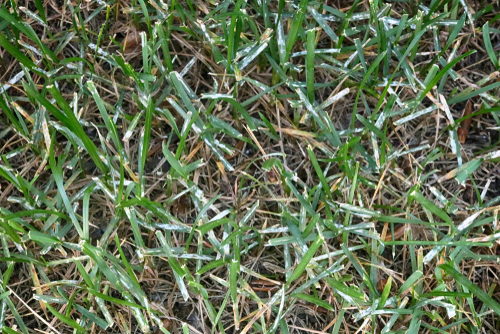
Symptoms: You’ll see powdery mildew at the top of your grass blades and downy mildew on the leaves at the soil surface. Mildew appears as white/grey fluff – if you look closely, you’ll see black dots within the fluff. Eventually, the grass will dehydrate and die.
Causes: Mildew occurs as a result of high humidity.
Occurrence: Spring and summer in high humidity. It most frequently appears on shaded parts of your lawn.
Lawn Disease Treatment: You could simply wait until the temperature drops, which deactivates the fungus. If you want to fight it manually, dust the grass with a sulphur-based fungicide.
Dollar spot disease
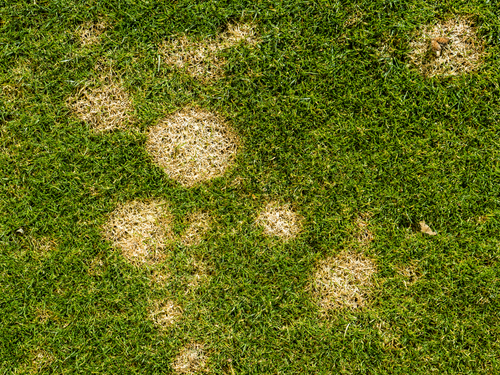
Symptoms: Brown-coloured coin-sized spots, presenting as light brown circles, surrounded by a dark brown, almost red border.
Causes: Dollar spot thrives in alternating humid, then warm weather (with cool nights). Fescue grasses are particularly susceptible.
Occurrence: Late spring and late autumn.
Lawn Disease Treatment: Feed your lawn with a high-nitrogen fertiliser or spread lime. If the fungus is stubborn, use an organic fungicide.
Rust lawn disease
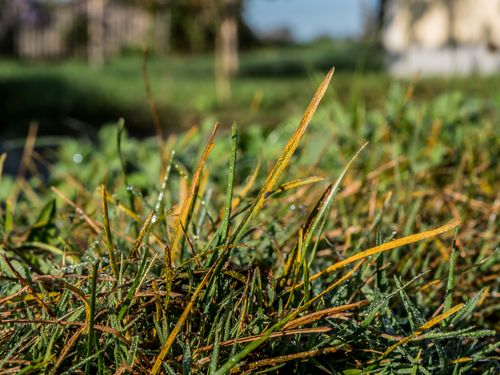
A slow-acting fungus that results in yellow or orange traces on the grass blade. Rust sits on the blade and is easily brushed off, which can help spread the infection. There are three principal types of rust disease:
Crown rust:
A yellow/brown withering at the tips of the grass blades. Starts as tiny yellow spots and spreads across the tips of the leaf. Results in dusty spore deposits that look a little like pustules.
Brown stain rust:
Brown dots that spread across the entire leaf.
Orange stripe rust:
Noticeably stark yellow/orange fungus that affects the entire leaf of the grass plant in a stripe. It quickly spreads across the whole lawn.
Causes: Rust lawn diseases are often caused by poorly nourished soil and over-cutting of the leaves. The spores are easily transmitted by foot traffic from animals and humans and could be spread with standard gardening tools.
Occurrence: Potentially year-round, but increased risk during a warm, wet summer, followed by a warm autumn.
Lawn Disease Treatment: The best treatment is prevention, so avoid rust by ensuring your lawn remains in good condition. Provide the correct amount of fertiliser, and use a high-potassium fertiliser in the autumn to strengthen your turf over the winter. Use a high-nitrogen fertiliser in the spring to give the turf a growth burst and mow, but don’t mulch. Remove the clippings after cutting.
Pythium lawn disease
Symptoms: Also known as Root Rot, pythium appears as sunken, brownish areas on your lawn, with a slimy film along the stalks of the blades.
Causes: Drought stress, waterlogging, high soil pH.
Occurrence: Mainly in the summer or autumn, when it’s hot and soggy.
Lawn Disease Treatment: Aerate the soil to loosen it and remove the thatch layer with a rake or scarifier – this improves your soil’s drainage. When watering your lawn, sprinkle in the morning to allow the turf to dry during the afternoon. Avoid watering in the evening, as night moisture encourages further spread.
Could the disease actually be a pest infestation?
Many lawn diseases present in a similar way to pest infestations. For example, dollar spot looks similar to a chafer grub infestation.
Alternatively, dollar spot could be a leatherjacket infestation.
Your lawn patches could be a nutrient deficiency
Alternatively, the yellow patches in your turf could result from a nutrient deficiency.
Ultimately, the best way to prevent fungal lawn diseases is to maintain your soil, providing enough nutrients to support your lawn’s optimal growth. There’s an NPK fertiliser for every season, so make sure you use the correct fertiliser to help your lawn flourish throughout the year.
-
All-Round Lawn Fertiliser
 In stock11.99
In stock11.99- Order by 2PM = shipped today
- 250.000+ satisfied customers!
- 60 day satisfaction guarantee
-
TopLong Lasting Lawn Fertiliser
 In stock12.99
In stock12.99- Order by 2PM = shipped today
- 250.000+ satisfied customers!
- 60 day satisfaction guarantee
-
Spring Boost Lawn Fertiliser
 In stock11.99
In stock11.99- Order by 2PM = shipped today
- 250.000+ satisfied customers!
- 60 day satisfaction guarantee
Carrying out a soil test helps ascertain the acidity of your soil – too acid, and your grass plants will suffer (and weeds will thrive). Adding garden lime to your soil helps neutralise acidity.
Preventing lawn diseases
The occurrence of lawn diseases is not solely dependent on the time of year. Here’s what you can do to prevent lawn diseases:
Sufficient light
Direct access to sunlight helps minimise excessive moisture from the soil surface, helping prevent fungal growth.
Good airflow
Mow your lawn regularly to help improve the airflow over the soil surface, preventing soggy soil.
Minimal thatch
Thatch is the organic matter that collects over the soil surface. The more thatch around your grass plants, the more likely fungal infections will occur.
Minimal compaction
Hard soil around grass roots inhibits leaf growth, providing more space for fungal infections to develop. To achieve this, it’s crucial to fertilise, water, and aerate your lawn. Aeration involves creating holes in the ground to strengthen the roots of your lawn.
Regular mowing
Following the 1/3 rule to avoid cutting the grass too short, enhances grass resilience against diseases. Mulching after mowing returns nutrients to your lawn. Ensure the grass doesn’t suffocate by removing (fall) leaves and coarse organic matter, and perform scarifying if necessary.
FAQ‘s
Look for signs of yellow, brown, or orange patches. Take a close look at the damaged spots on your lawn – if you can see tiny threads or fungal mycelium between the stalks, it’s a sure sign of fungal lawn disease.
In the UK, the most common grass diseases are usually caused by a fungal infection. You’ll see little orange or brown spots on the grass blades, or the grass leaf itself may appear to be dying. Fungal infections often occur in circles across the lawn, or they can spread across the entire turf. Alternatively, pests such as chafer grubs or leatherjackets could cause yellow patches on your turf.
If you look closely, you’ll see tiny threads that appear to be grass blades, but they’re usually brown or orange. These are tiny fungal threads and require prompt treatment to prevent them from spreading across your turf.
Ready to treat your lawn disease? Or do you have more questions?
We hope you’ve got all the information you need to make an informed decision about how to identify, fight, and prevent lawn diseases that could be affected your lawn. But if you have any further questions, please don’t hesitate to get in touch.
We love to hear from you, so send us an email, and we’ll get back to you as soon as possible.
Happy gardening!
-
Firebugs in the Garden: What now?!Firebugs in your garden? SPOILER ALERT – they're benign! They won't harm you or your garden. Find out how these interesting bugs contribute to your garden's ecosystem.Read more
-
How to Prevent and Control Scale InsectsScale insects are tiny sap-loving insects that can kill your plants if left to their own devices. How to identify them, treat the problem, and nurse your plants back to health after an infestation.Read more
-
How to Prevent and Control Mealybugs on your Plants (and aftercare)Mealybugs look like little fluffy specks of mould, but they'll quickly destroy your house plants or greenhouse plants. Learn how to spot an infestation and what to do to prevent the problem from spreading.Read more
-
Recognise and Control Mares Tail in your garden: from Identification to EradicationMares tail (aka Horsetail) is an invasive weed with deep roots, which make it a real challenge to eradicate. Find out about this fascinating weed (and find out how to tackle the problem).Read more
-
How to get rid of flies: the best tips and tricks!Having flies buzzing around the house is not only annoying, it can pose a significant health hazard. Find out how to get rid of flies without resorting to harsh chemicals and poisons.Read more
-
Whitefly on your plant: Prevention, Control, and TreatmentWhitefly are tiny little insects that quickly kill your plants and attract ants! Find out how to prevent and control an infestation.Read more
-
How to Get Rid of Wasps: Tips and Tricks!Wasps! What a nightmare! While these aggressive little insects offer a painful sting, there's more to the wasp that you might first think. Prevent them arriving with out handy tips.Read more
-
How to Identify, Fight, and Prevent Vine WeevilThe vine weevil is a destructive little pest. Recognise the signs of infestation to prevent the widespread damage this critter can do to your garden plants.Read more
Leave a comment
Your answer will be displayed on the site and the interested party will be notified by email.
Leave a comment
Have a question or want to share your experience? Leave us a comment.

- Order by 2PM = shipped today
- 250.000+ satisfied customers!
- 60 day satisfaction guarantee

- Order by 2PM = shipped today
- 250.000+ satisfied customers!
- 60 day satisfaction guarantee

- Order by 2PM = shipped today
- 250.000+ satisfied customers!
- 60 day satisfaction guarantee

🌱 All important maintenance moments for your lawn during the year. Leave your email and we will send you the lawn calendar for free.
Enter your email
Receive the lawn calendar in the mail
Enjoy a green lawn all year round!



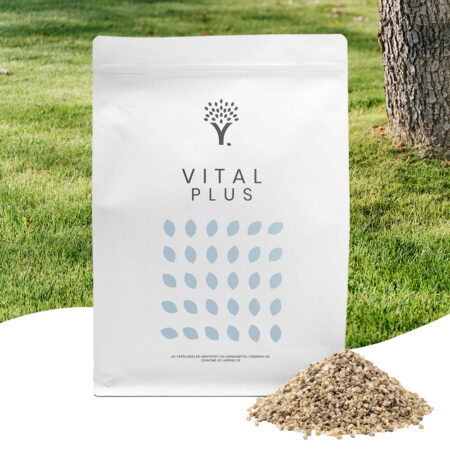
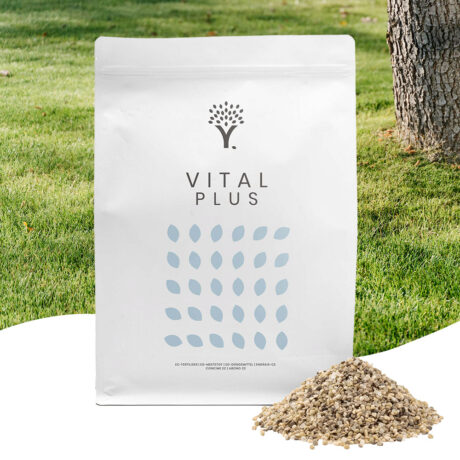

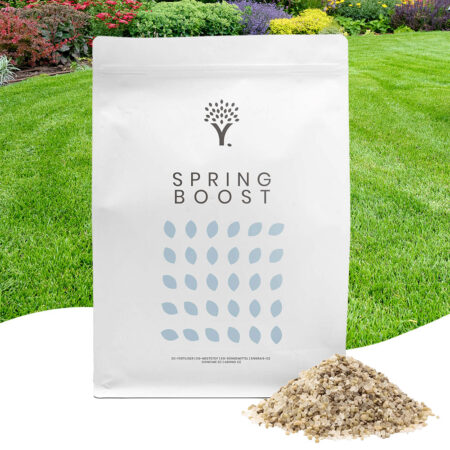
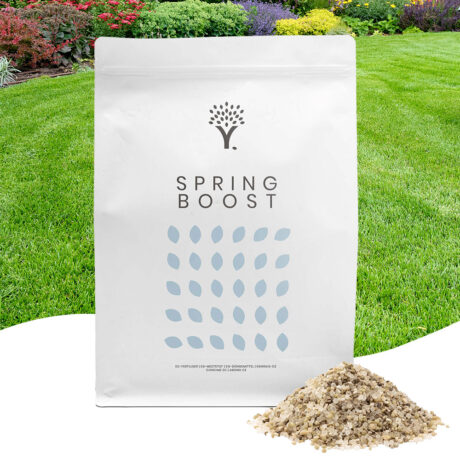


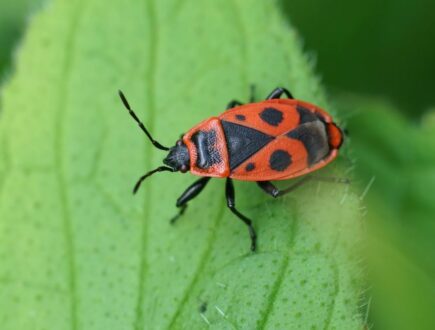
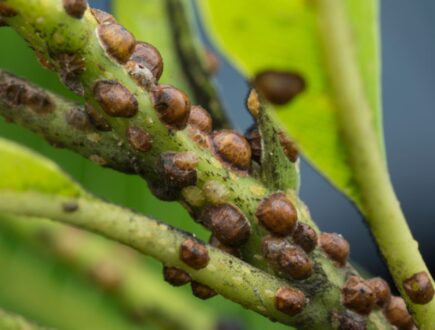
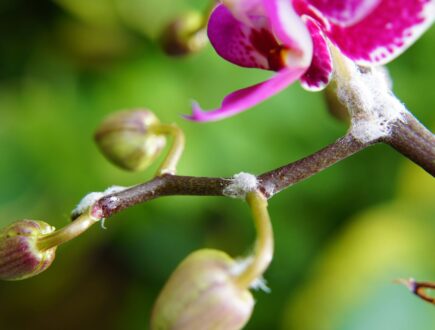

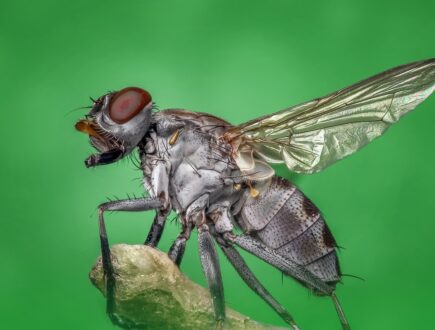
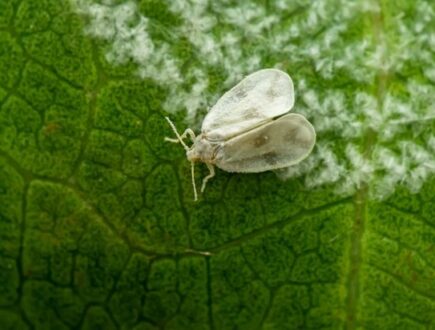
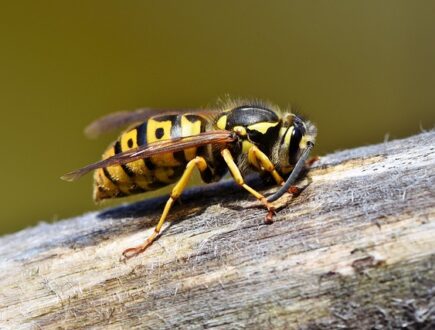
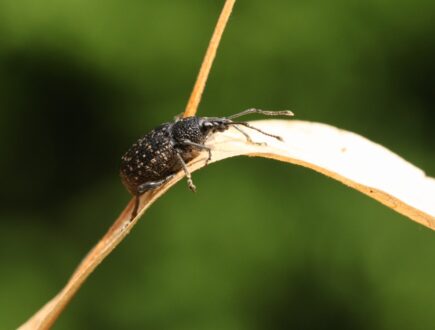


 Summer Deal! Get 15% off the
Summer Deal! Get 15% off the 




Comments (0)
There are no comments yet. Well then, what are you waiting for to
Be the first to write your comment!inaugurate this pretty page?
Do you have some comments?